Shaohan Li
Met$^2$Net: A Decoupled Two-Stage Spatio-Temporal Forecasting Model for Complex Meteorological Systems
Jul 23, 2025Abstract:The increasing frequency of extreme weather events due to global climate change urges accurate weather prediction. Recently, great advances have been made by the \textbf{end-to-end methods}, thanks to deep learning techniques, but they face limitations of \textit{representation inconsistency} in multivariable integration and struggle to effectively capture the dependency between variables, which is required in complex weather systems. Treating different variables as distinct modalities and applying a \textbf{two-stage training approach} from multimodal models can partially alleviate this issue, but due to the inconformity in training tasks between the two stages, the results are often suboptimal. To address these challenges, we propose an implicit two-stage training method, configuring separate encoders and decoders for each variable. In detailed, in the first stage, the Translator is frozen while the Encoders and Decoders learn a shared latent space, in the second stage, the Encoders and Decoders are frozen, and the Translator captures inter-variable interactions for prediction. Besides, by introducing a self-attention mechanism for multivariable fusion in the latent space, the performance achieves further improvements. Empirically, extensive experiments show the state-of-the-art performance of our method. Specifically, it reduces the MSE for near-surface air temperature and relative humidity predictions by 28.82\% and 23.39\%, respectively. The source code is available at https://github.com/ShremG/Met2Net.
STAA: Spatio-Temporal Alignment Attention for Short-Term Precipitation Forecasting
Sep 06, 2024Abstract:There is a great need to accurately predict short-term precipitation, which has socioeconomic effects such as agriculture and disaster prevention. Recently, the forecasting models have employed multi-source data as the multi-modality input, thus improving the prediction accuracy. However, the prevailing methods usually suffer from the desynchronization of multi-source variables, the insufficient capability of capturing spatio-temporal dependency, and unsatisfactory performance in predicting extreme precipitation events. To fix these problems, we propose a short-term precipitation forecasting model based on spatio-temporal alignment attention, with SATA as the temporal alignment module and STAU as the spatio-temporal feature extractor to filter high-pass features from precipitation signals and capture multi-term temporal dependencies. Based on satellite and ERA5 data from the southwestern region of China, our model achieves improvements of 12.61\% in terms of RMSE, in comparison with the state-of-the-art methods.
Efficient Detection of Long Consistent Cycles and its Application to Distributed Synchronization
Jul 05, 2024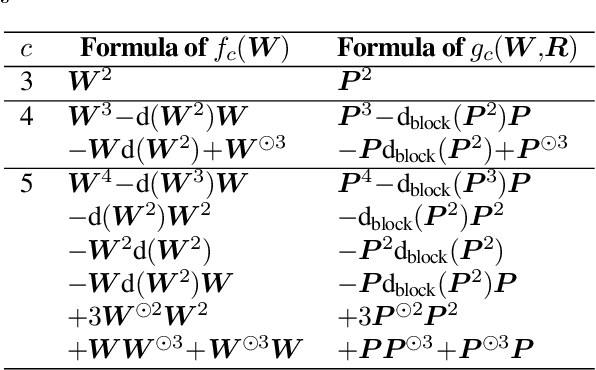
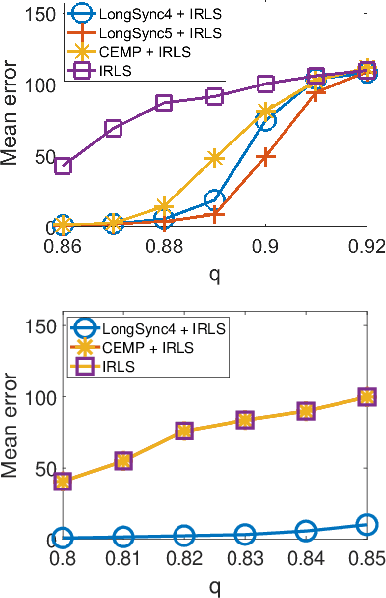
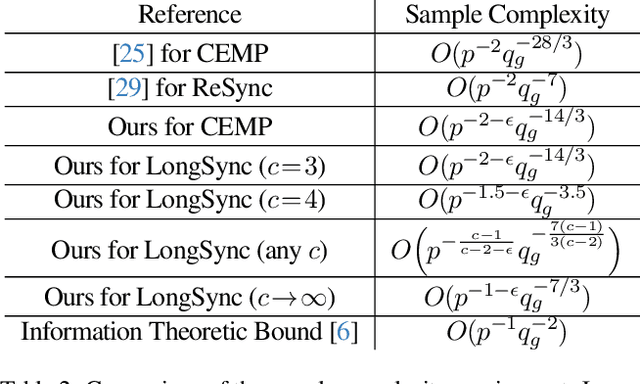

Abstract:Group synchronization plays a crucial role in global pipelines for Structure from Motion (SfM). Its formulation is nonconvex and it is faced with highly corrupted measurements. Cycle consistency has been effective in addressing these challenges. However, computationally efficient solutions are needed for cycles longer than three, especially in practical scenarios where 3-cycles are unavailable. To overcome this computational bottleneck, we propose an algorithm for group synchronization that leverages information from cycles of lengths ranging from three to six with a time complexity of order $O(n^3)$ (or $O(n^{2.373})$ when using a faster matrix multiplication algorithm). We establish non-trivial theory for this and related methods that achieves competitive sample complexity, assuming the uniform corruption model. To advocate the practical need for our method, we consider distributed group synchronization, which requires at least 4-cycles, and we illustrate state-of-the-art performance by our method in this context.
The effect of Leaky ReLUs on the training and generalization of overparameterized networks
Feb 25, 2024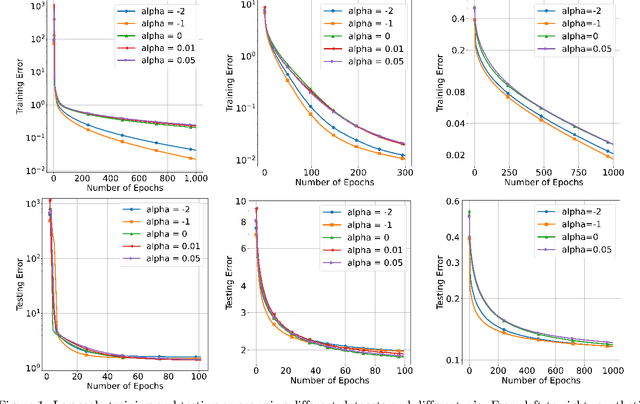

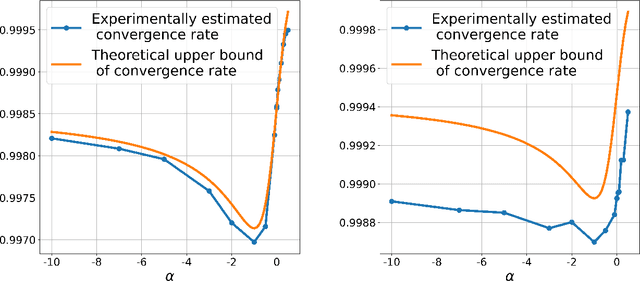
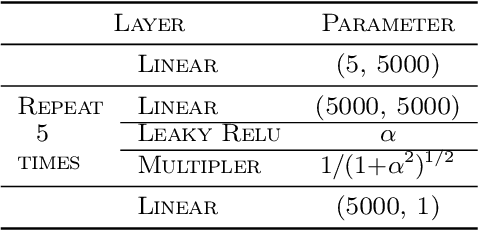
Abstract:We investigate the training and generalization errors of overparameterized neural networks (NNs) with a wide class of leaky rectified linear unit (ReLU) functions. More specifically, we carefully upper bound both the convergence rate of the training error and the generalization error of such NNs and investigate the dependence of these bounds on the Leaky ReLU parameter, $\alpha$. We show that $\alpha =-1$, which corresponds to the absolute value activation function, is optimal for the training error bound. Furthermore, in special settings, it is also optimal for the generalization error bound. Numerical experiments empirically support the practical choices guided by the theory.
Fast, Accurate and Memory-Efficient Partial Permutation Synchronization
Mar 31, 2022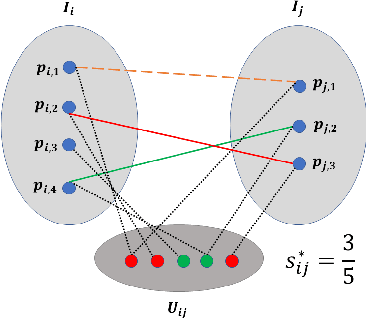
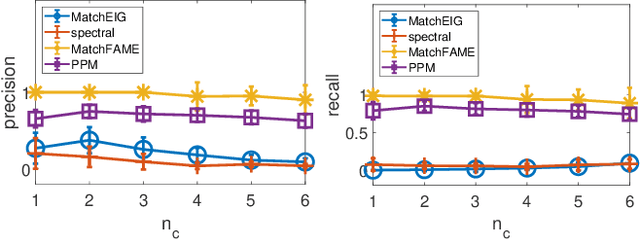

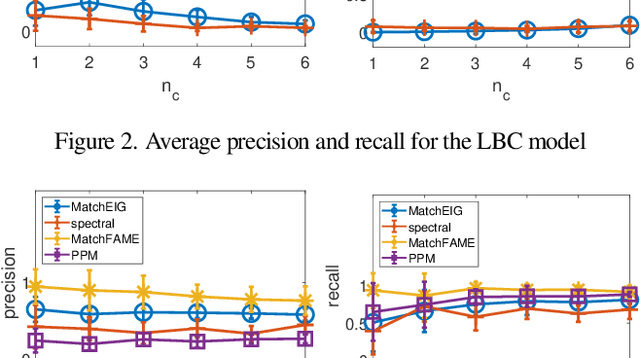
Abstract:Previous partial permutation synchronization (PPS) algorithms, which are commonly used for multi-object matching, often involve computation-intensive and memory-demanding matrix operations. These operations become intractable for large scale structure-from-motion datasets. For pure permutation synchronization, the recent Cycle-Edge Message Passing (CEMP) framework suggests a memory-efficient and fast solution. Here we overcome the restriction of CEMP to compact groups and propose an improved algorithm, CEMP-Partial, for estimating the corruption levels of the observed partial permutations. It allows us to subsequently implement a nonconvex weighted projected power method without the need of spectral initialization. The resulting new PPS algorithm, MatchFAME (Fast, Accurate and Memory-Efficient Matching), only involves sparse matrix operations, and thus enjoys lower time and space complexities in comparison to previous PPS algorithms. We prove that under adversarial corruption, though without additive noise and with certain assumptions, CEMP-Partial is able to exactly classify corrupted and clean partial permutations. We demonstrate the state-of-the-art accuracy, speed and memory efficiency of our method on both synthetic and real datasets.
Scalable Cluster-Consistency Statistics for Robust Multi-Object Matching
Jan 13, 2022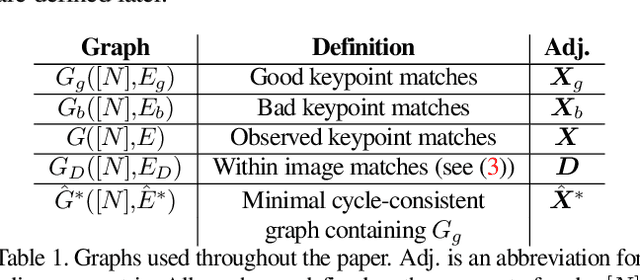
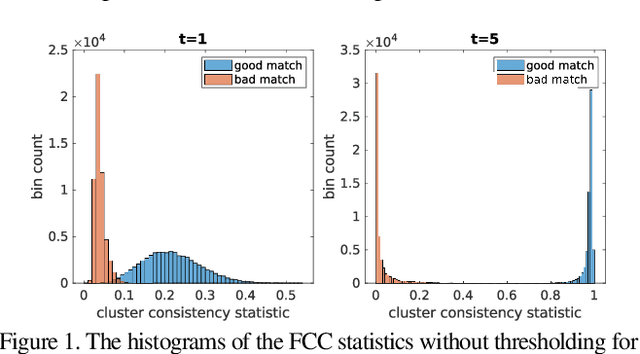

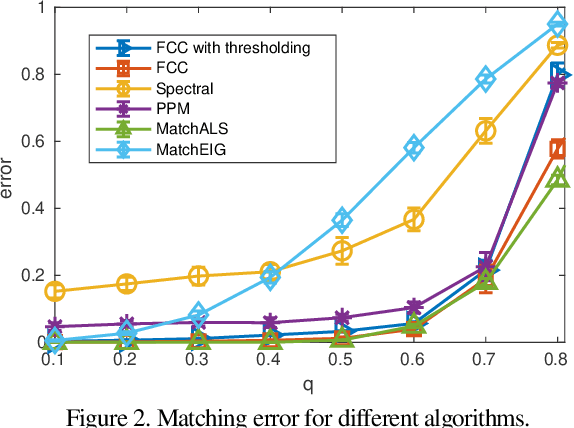
Abstract:We develop new statistics for robustly filtering corrupted keypoint matches in the structure from motion pipeline. The statistics are based on consistency constraints that arise within the clustered structure of the graph of keypoint matches. The statistics are designed to give smaller values to corrupted matches and than uncorrupted matches. These new statistics are combined with an iterative reweighting scheme to filter keypoints, which can then be fed into any standard structure from motion pipeline. This filtering method can be efficiently implemented and scaled to massive datasets as it only requires sparse matrix multiplication. We demonstrate the efficacy of this method on synthetic and real structure from motion datasets and show that it achieves state-of-the-art accuracy and speed in these tasks.
Robust Multi-object Matching via Iterative Reweighting of the Graph Connection Laplacian
Jun 11, 2020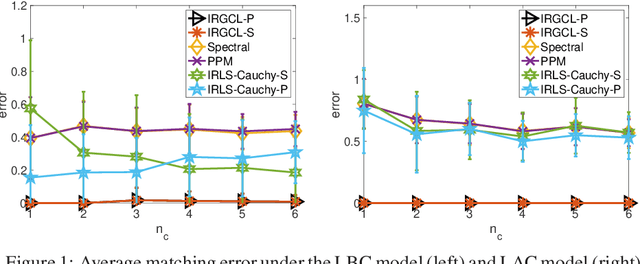

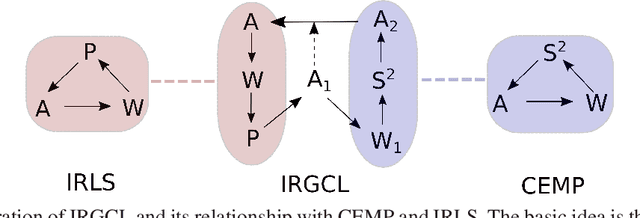
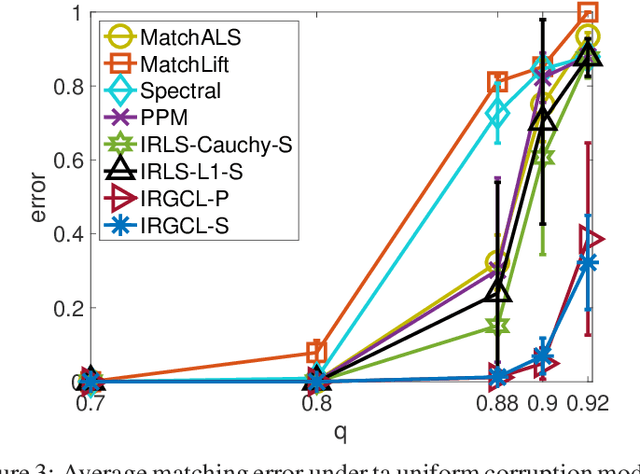
Abstract:We propose an efficient and robust iterative solution to the multi-object matching problem. We first clarify serious limitations of current methods as well as the inappropriateness of the standard iteratively reweighted least squares procedure. In view of these limitations, we propose a novel and more reliable iterative reweighting strategy that incorporates information from higher-order neighborhoods by exploiting the graph connection Laplacian. We demonstrate the superior performance of our procedure over state-of-the-art methods using both synthetic and real datasets.
 Add to Chrome
Add to Chrome Add to Firefox
Add to Firefox Add to Edge
Add to Edge